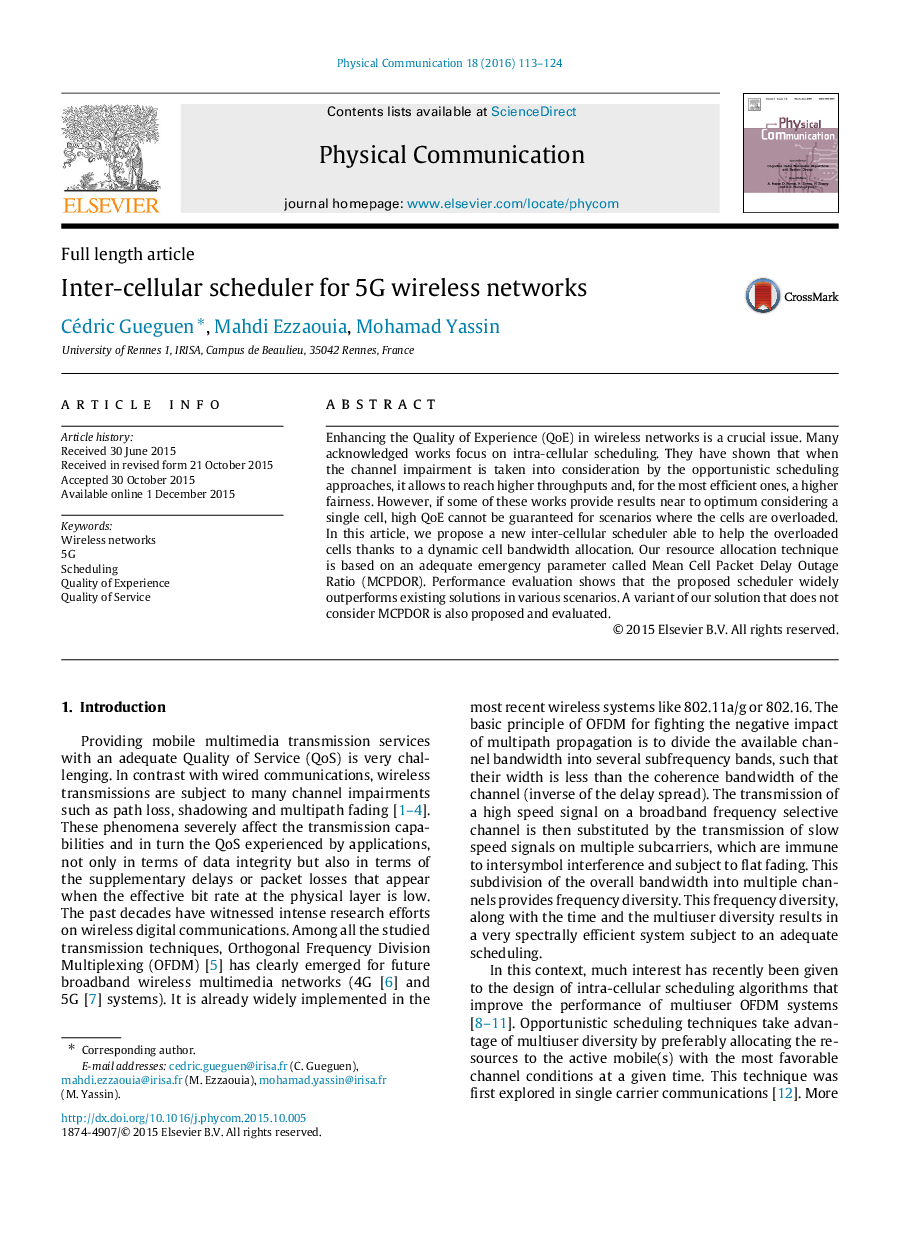| کد مقاله | کد نشریه | سال انتشار | مقاله انگلیسی | نسخه تمام متن |
|---|---|---|---|---|
| 466655 | 697863 | 2016 | 12 صفحه PDF | دانلود رایگان |
چکیده
کلمات کلیدی
1.مقدمه
2 کارهای انجام شده
شکل1: مدل فرکانسی reuse-3
جدول1: لیست نمادها
3 برنامه ریزی به اشتراک گذاری پهنای باند بین سلولی (IBFS)
3.1 الگوریتم IBFS
3.2 متریک انتخاب سلول
شکل 3 : یک مثال از تاخیر بسته ی CDF و PDOR تجربه شده
شکل 4 : نمای خوشه ای
شکل 2_ فلوچارت الگوریتم زمان بندی IBFS
4 ارزیابی عملکرد
4.1 تنظیمات شبیه سازی و مفروضات
4.2 سناریوی اول: سلول هایی با انواع مختلفی از پروفایل های کاربر
شکل5: نتایج شبیه سازی از سناریو اول
4.3 سناریوی دوم : سربار سلول ها (سلول های اضافه شده)
شکل6: ارزیابی عملکرد سناریو
شکل 7: بار ترافیکی سلول های سیستم
شکل9: میانگین تاخیر سلول های سیستم با REUSE3
شکل 12: تحلیلی از محدودیت های QoS
4.3 سلول هایی با شرایط مختلف رادیویی
شکل 13 – مقایسه ی میزان نارضایتی کاربران برای reuse-3، IBFSLoad و IBFSMCPDOR
5 نتیجه گیری
Enhancing the Quality of Experience (QoE) in wireless networks is a crucial issue. Many acknowledged works focus on intra-cellular scheduling. They have shown that when the channel impairment is taken into consideration by the opportunistic scheduling approaches, it allows to reach higher throughputs and, for the most efficient ones, a higher fairness. However, if some of these works provide results near to optimum considering a single cell, high QoE cannot be guaranteed for scenarios where the cells are overloaded. In this article, we propose a new inter-cellular scheduler able to help the overloaded cells thanks to a dynamic cell bandwidth allocation. Our resource allocation technique is based on an adequate emergency parameter called Mean Cell Packet Delay Outage Ratio (MCPDOR). Performance evaluation shows that the proposed scheduler widely outperforms existing solutions in various scenarios. A variant of our solution that does not consider MCPDOR is also proposed and evaluated.
Journal: Physical Communication - Volume 18, Part 2, March 2016, Pages 113–124
